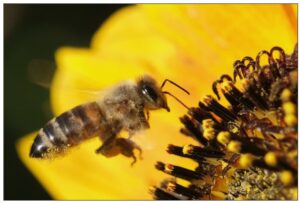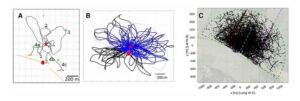WASHINGTON, June 15, 2023 — The U.S. Department of Agriculture (USDA) is now accepting
nominations for county committee members for elections that will occur later this year. Additionally, USDA’s Farm Service Agency (FSA) is unveiling a new GIS tool to make it easier for producers to participate in the nomination and election processes for county committee members, who make important decisions on how federal farm programs are administered locally.
All nomination forms for the 2023 election must be postmarked or received in the local FSA office by Aug. 1, 2023.
“Producers serving on FSA county committees play a critical role in the day-to-day operations of the agency, and they serve as the eyes and ears for the producers who elected them,” said FSA Administrator Zach Ducheneaux. “In order for county committees to be both effective and equitable in their decision-making at the local level, they must reflect the full diversity of American agriculture. I am excited that we have another opportunity through this year’s nominations and elections cycle to make our committees more inclusive, and in turn, better equipped to best serve all our customers. I encourage you to consider serving the farmers, ranchers and producers in your community on your local FSA county committee, and I thank you in advance for your public service.”
Elections will occur in certain Local Administrative Areas (LAA) for members. LAAs are elective areas for FSA committees in a single county or multi-county jurisdiction and they may include LAAs that are focused on an urban or suburban area.
Customers can locate their LAA through a new GIS locator tool available at fsa.usda.gov/elections.
“Based on feedback from stakeholders, including the USDA Equity Commission, we are unveiling this new tool to make it easier for producers to effectively participate in the process,” Ducheneaux added.
Agricultural producers may be nominated for candidacy for the county committee if they:
- Participate or cooperate in a USDA program; and
- Reside in the LAA that is up for election this year.
1400 Independence Ave. SW Washington, DC 20250
Contact:
FPAC.BC.Press@usda.gov
Farm Service Agency
A cooperating producer is someone who has provided information about their farming or ranching operation to FSA, even if they have not applied or received program benefits. Individuals may nominate themselves or others and qualifying organizations may also nominate candidates. USDA encourages minority producers, women and beginning farmers or ranchers to nominate, vote and hold office.
Nationwide, more than 7,700 dedicated members of the agricultural community serve on FSA county committees. The committees are made up of three to 11 members who serve three-year terms. Committee members are vital to how FSA carries out disaster programs, as well as conservation, commodity and price support programs, county office employment and other agricultural issues.
Urban and Suburban County Committees
The 2018 Farm Bill directed USDA to form urban county committees as well as make other advancements related to urban agriculture, including the establishment of the Office of Urban Agriculture and Innovative Production. FSA established county committees specifically focused on urban agriculture. The urban county committees will work to encourage and promote urban, indoor and other emerging agricultural production practices. Additionally, the new county committees may address areas such as food access, community engagement, support of local activities to promote and encourage community compost and food waste reduction.
Urban committee members are nominated and elected to serve by local urban producers in the same jurisdiction. Urban county committee members will provide outreach to ensure urban producers understand USDA programs and serve as the voice of other urban producers and assist in program implementation that support the needs of the growing urban community.
The 17 county committees for urban agriculture are located in:
- Albuquerque, New Mexico
- Atlanta, Georgia
- Chicago, Illinois
- Cleveland, Ohio
- Detroit, Michigan
- Dallas, Texas
- Grand Rapids, Michigan
- Los Angeles, California
- Minneapolis-St. Paul, Minnesota
- New Orleans, Louisiana
- New York, New York
- Oakland, California
- Philadelphia, Pennsylvania
- Phoenix, Arizona
- Portland, Oregon
- Richmond, Virginia
- St. Louis, Missouri
Learn more at farmers.gov/urban.
More Information
Producers should contact their local FSA office today to register and find out how to get involved in their county’s election, including if their LAA is up for election this year. To be considered, a producer must be registered and sign an FSA-669A nomination form. Urban farmers should use an FSA-669-A-3 for urban county committees. These forms and other information about FSA county committee elections are available at fsa.usda.gov/elections.
Election ballots will be mailed to eligible voters beginning Nov. 6, 2023.
To learn more about FSA programs, producers can contact their local USDA Service Center. Producers can also prepare maps for acreage reporting as well as manage farm loans and view other farm records data and customer information by logging into their farmers.gov account. If you don’t have an account, sign up today.
USDA touches the lives of all Americans each day in so many positive ways. In the Biden-Harris
administration, USDA is transforming America’s food system with a greater focus on more resilient local and regional food production, fairer markets for all producers, ensuring access to safe, healthy and nutritious food in all communities, building new markets and streams of income for farmers and producers using climate smart food and forestry practices, making historic investments in infrastructure and clean energy capabilities in rural America and committing to equity across the department by removing systemic barriers and building a workforce more representative of America. To learn more, visit usda.gov.
#
USDA is an equal opportunity provider, employer, and lender.















